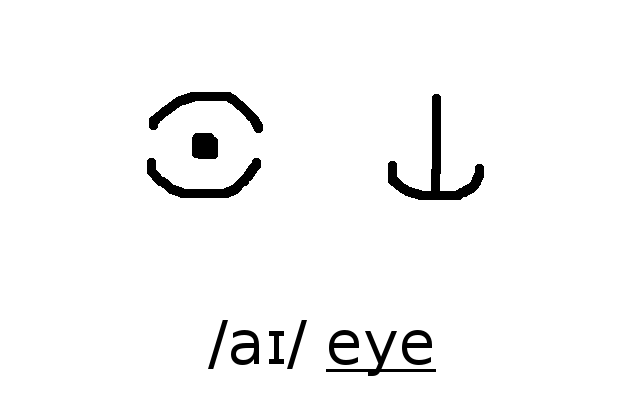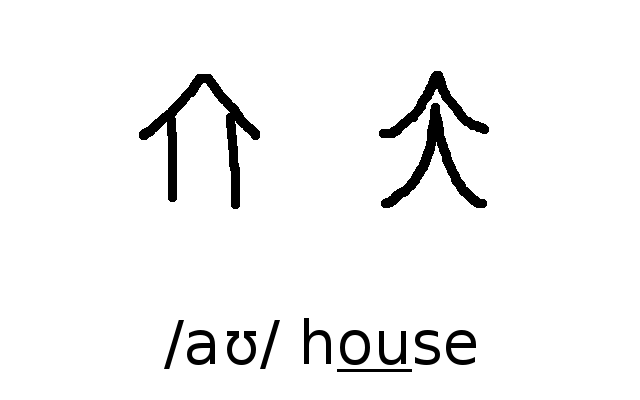On a road trip in Colorado in March 2015, a friend and I had the idea to create an alphabet for English that was based on the same basic principle as Phoenician: represent each sound with a pictograph for a word using that sound. For example, we chose "moon" for /m/. (Although of course Phoenician evolved from the long-existing hieroglyphic system and was not designed this way, I figured it was not worth the trouble to create such a thing only for the purpose of turning it into an alphabet and throwing away the vast majority of signs.) For some sounds, especially less-common vowels like /ʊ/ or consonants like /ʒ/, we couldn't come up with common, easily depictable words where they occurred initially. In those cases we just picked something that used the sound, wasn't already taken, and was pretty easily depictable.
The original pictographs were mostly drawn using sticks in the mud by small streams, or, in one case, using charred wood on a rock. Since then, I have drawn them more often on paper and chalkboards and in soft, dry sand. This has given them a more connected and curved style in many cases, though not quite what I would call "cursive". Some I still find a little aesthetically unsatisfactory, so further changes will surely occur at some point. I still use the original style quite a bit, though.
Spelling conventions do not really exist, and I transcribe English the way I speak it. Deciding on /ə/ vs. /ɪ/ for reduced vowels, whether to write a semivowel or the corresponding high vowel in certain cases (e.g. "fire", which I might write /faɪ.ər/ or /fɑjər/), and how to account for variation are unaddressed at this point. Stress is also unmarked. I mostly use this for fun, leaving secret messages wherever people are allowed to write on a public wall/chalkboard, or writing un-eavesdroppable reminders on my hand, so I don't really care about these orthographic issues at the moment.
The letters for /aɪ/ and /aʊ/ were added later, as an experiment that I decided I liked, but they remain optional. Those sequences can still be written as /ɑ+j/ and /ɑ+w/. The letter for /ɔ/ was added because I, being from the South and having many mergers in my English, had decided it was unnecessary for my original purposes. But another linguistically-oriented friend of mine who is from Chicago insisted that I create one, so I did, but I still never use it. I even had to ask him for words that included the sound because I had never learned the difference (a problem I still run into with pin/pen words that have something other than orthographic <in> or <en>). I know there are other vowels from other dialects that are not accounted for here, so maybe someday I'll get around to making some new symbols.
Below is the alphabet, with original characters on the left and current ones on the right. In some cases, I also show an intermediate stage that I sometimes still use.




































